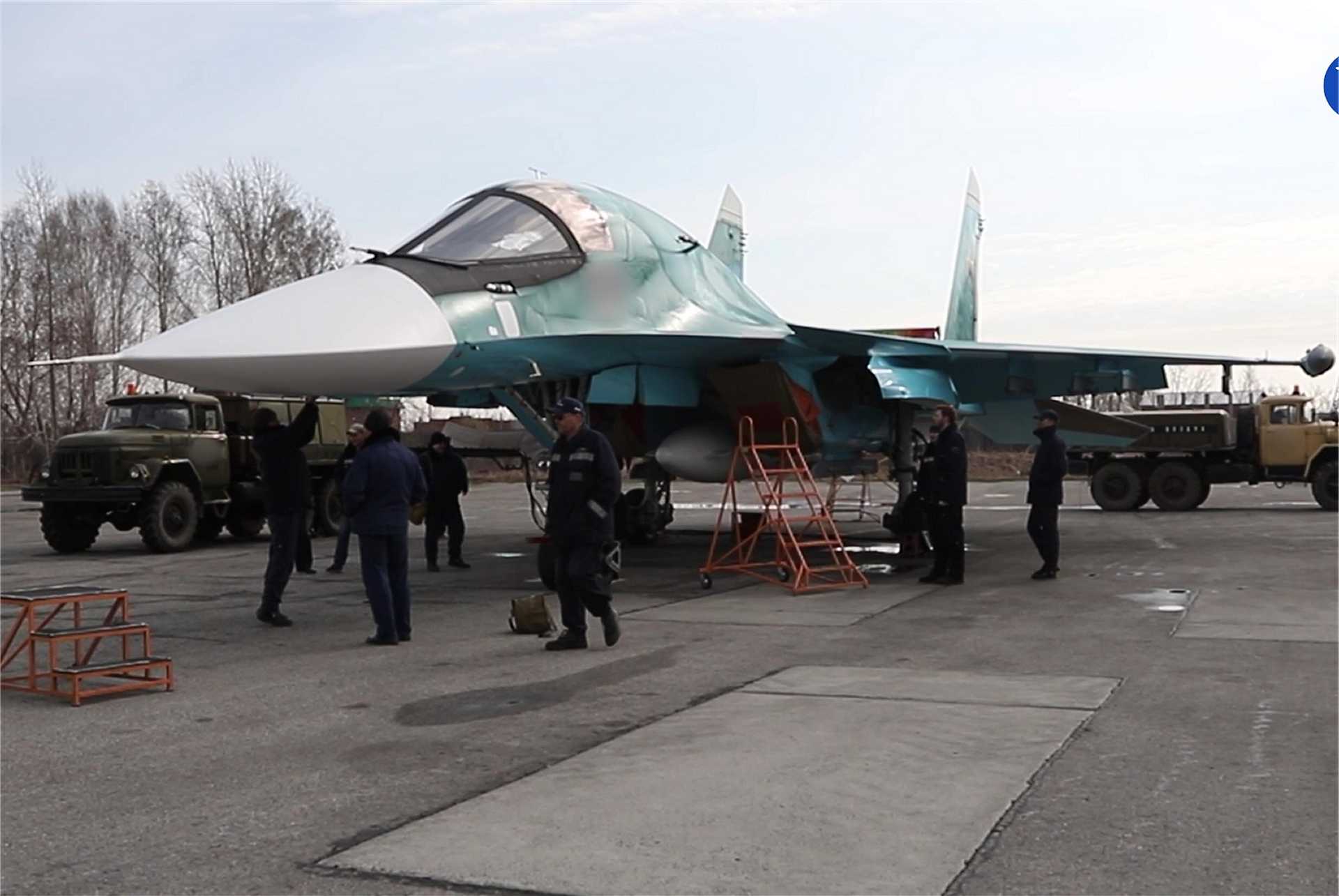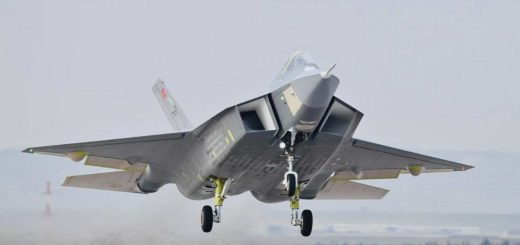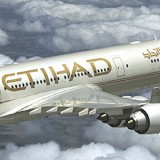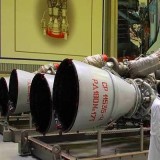Flash News: Russia Delivers New Batch of Su-34 Fighter Bombers and Doubles Production Despite Global Sanctions

{loadposition bannertop}
{loadposition sidebarpub}
According to information published on April 19, 2025, by the Russian state defense conglomerate Rostec, the Russian defense sector continues to reinforce its aerial combat capabilities with the latest delivery of Su-34 fighter-bombers to the Russian Air Force. The aircraft, produced by United Aircraft Corporation (UAC), a key player in Russia’s aerospace and defense industry, represent a significant increase in production capacity—having more than doubled over the past two years.Follow Army Recognition on Google News at this link
A newly delivered Su-34 fighter-bomber taxis on the runway at a Russian air base after being handed over to the Russian Aerospace Forces, showcasing ongoing deliveries and increased production despite international sanctions. (Picture source: ROSTEC)
The Su-34, NATO reporting name “Fullback,” is a modern twin-seat, twin-engine strike fighter designed to engage ground, surface, and air targets, including those protected by sophisticated air defense systems. With an impressive operational range and advanced avionics, the aircraft is engineered to operate in high-threat environments and adverse weather conditions, day or night, across various theaters of military operations.
Equipped with a comprehensive suite of guided and unguided air-to-ground and air-to-air munitions, the Su-34 is also capable of conducting aerial reconnaissance missions. It is considered a cornerstone of Russia’s tactical air strike force, particularly valuable in complex combat zones.
According to Vladimir Artyakov, First Deputy General Director of Rostec, the Su-34 represents the backbone of Russian frontline aviation’s striking power. He stated that the aircraft is considered the best in its class, playing a crucial role in fulfilling key operational tasks in the Russia-Ukraine War. Artyakov highlighted its high efficiency, excellent maneuverability, and strong combat performance. He also noted the growing demand for the Su-34 within the armed forces and confirmed that Russian aircraft factories are actively increasing the production rate of this fighter-bomber.
All newly delivered aircraft have completed a full cycle of factory acceptance testing, validating their performance in various operational scenarios before deployment to their assigned airfields.
This surge in production comes despite the extensive international sanctions imposed on Russia in the context of the ongoing war in Ukraine. These sanctions, aimed at restricting Russia’s access to foreign technologies and critical components, have not prevented the continuation of combat aircraft manufacturing. On the contrary, Russia has managed not only to sustain but also significantly boost its domestic aerospace production capabilities. The output of the Su-34, in particular, has more than doubled over the past two years, underscoring the resilience and adaptability of the Russian defense industry under economic and technological constraints.
In terms of fighter aircraft technology, the Su-34 is a heavily modernized derivative of the Su-27 platform, adapted specifically for long-range strike missions. It features a side-by-side cockpit configuration, advanced navigation and targeting systems, and a substantial payload capacity. The aircraft is equipped with a modern radar system, electronic warfare equipment, and a robust self-defense suite, allowing it to operate autonomously in high-threat environments.
Compared to Western counterparts, the Su-34’s role is most closely aligned with the American F-15E Strike Eagle and the European Tornado IDS, both of which are designed for deep interdiction missions with precision-guided weapons. While not a stealth aircraft, the Su-34 compensates with long range, high speed, and the ability to carry a wide array of weaponry. It remains a highly versatile platform within the fourth-generation-plus category, offering a blend of strike, reconnaissance, and limited air combat capabilities. Despite technological differences with fifth-generation aircraft like the F-35, the Su-34 remains a significant component of Russia’s aerial strike power.
The continued expansion of Su-34 fighter-bombers production by Russia, even amid intense international sanctions and the pressures of ongoing warfare, highlights Russia’s strategic focus on maintaining air superiority and operational reach. As the conflict in Ukraine persists, the role of the Su-34 is set to grow, reinforcing its position as a critical asset in Russia’s modern combat aviation fleet.

{loadposition bannertop}
{loadposition sidebarpub}
According to information published on April 19, 2025, by the Russian state defense conglomerate Rostec, the Russian defense sector continues to reinforce its aerial combat capabilities with the latest delivery of Su-34 fighter-bombers to the Russian Air Force. The aircraft, produced by United Aircraft Corporation (UAC), a key player in Russia’s aerospace and defense industry, represent a significant increase in production capacity—having more than doubled over the past two years.
Follow Army Recognition on Google News at this link
A newly delivered Su-34 fighter-bomber taxis on the runway at a Russian air base after being handed over to the Russian Aerospace Forces, showcasing ongoing deliveries and increased production despite international sanctions. (Picture source: ROSTEC)
The Su-34, NATO reporting name “Fullback,” is a modern twin-seat, twin-engine strike fighter designed to engage ground, surface, and air targets, including those protected by sophisticated air defense systems. With an impressive operational range and advanced avionics, the aircraft is engineered to operate in high-threat environments and adverse weather conditions, day or night, across various theaters of military operations.
Equipped with a comprehensive suite of guided and unguided air-to-ground and air-to-air munitions, the Su-34 is also capable of conducting aerial reconnaissance missions. It is considered a cornerstone of Russia’s tactical air strike force, particularly valuable in complex combat zones.
According to Vladimir Artyakov, First Deputy General Director of Rostec, the Su-34 represents the backbone of Russian frontline aviation’s striking power. He stated that the aircraft is considered the best in its class, playing a crucial role in fulfilling key operational tasks in the Russia-Ukraine War. Artyakov highlighted its high efficiency, excellent maneuverability, and strong combat performance. He also noted the growing demand for the Su-34 within the armed forces and confirmed that Russian aircraft factories are actively increasing the production rate of this fighter-bomber.
All newly delivered aircraft have completed a full cycle of factory acceptance testing, validating their performance in various operational scenarios before deployment to their assigned airfields.
This surge in production comes despite the extensive international sanctions imposed on Russia in the context of the ongoing war in Ukraine. These sanctions, aimed at restricting Russia’s access to foreign technologies and critical components, have not prevented the continuation of combat aircraft manufacturing. On the contrary, Russia has managed not only to sustain but also significantly boost its domestic aerospace production capabilities. The output of the Su-34, in particular, has more than doubled over the past two years, underscoring the resilience and adaptability of the Russian defense industry under economic and technological constraints.
In terms of fighter aircraft technology, the Su-34 is a heavily modernized derivative of the Su-27 platform, adapted specifically for long-range strike missions. It features a side-by-side cockpit configuration, advanced navigation and targeting systems, and a substantial payload capacity. The aircraft is equipped with a modern radar system, electronic warfare equipment, and a robust self-defense suite, allowing it to operate autonomously in high-threat environments.
Compared to Western counterparts, the Su-34’s role is most closely aligned with the American F-15E Strike Eagle and the European Tornado IDS, both of which are designed for deep interdiction missions with precision-guided weapons. While not a stealth aircraft, the Su-34 compensates with long range, high speed, and the ability to carry a wide array of weaponry. It remains a highly versatile platform within the fourth-generation-plus category, offering a blend of strike, reconnaissance, and limited air combat capabilities. Despite technological differences with fifth-generation aircraft like the F-35, the Su-34 remains a significant component of Russia’s aerial strike power.
The continued expansion of Su-34 fighter-bombers production by Russia, even amid intense international sanctions and the pressures of ongoing warfare, highlights Russia’s strategic focus on maintaining air superiority and operational reach. As the conflict in Ukraine persists, the role of the Su-34 is set to grow, reinforcing its position as a critical asset in Russia’s modern combat aviation fleet.






